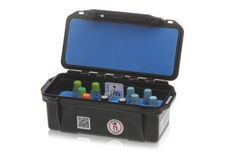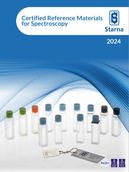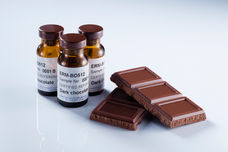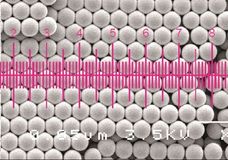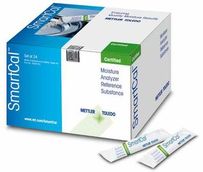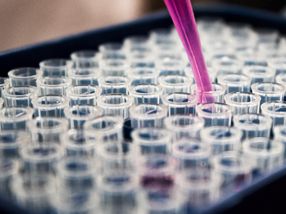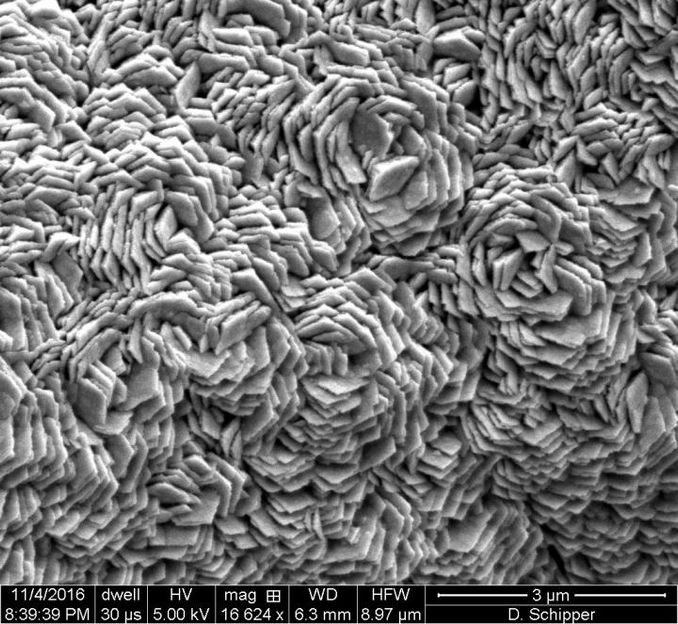New microplastic reference particles developed
Better comparability in microplastics studies at last
Advertisement
Researchers from the Collaborative Research Centre (CRC) microplastics at the University of Bayreuth have developed a new concept for the production of microplastic reference particles. These make it possible for the first time to introduce a precisely defined number of reference particles into experiments. In future, their use may enable better comparability of data from different microplastic studies.
Currently, different analysis methods are used in microplastics research, with different techniques being used for sample transfer, extraction, purification, sample division, measurement and evaluation, for example. This leads to data of varying quality and resolution which makes it very difficult to compare studies and consequently also to carry out a reliable risk assessment. A solution for comparing the data from different analysis techniques can only be achieved through a reliable quality assessment of the respective methods and harmonisation of the results. In order to enable such an evaluation, it must be known exactly how many microplastic particles are in the test samples for testing the analysis methods, e.g. to be able to determine the recovery rate. Therefore, reference microplastic particles are needed that can be added to the test samples in precisely known numbers as an internal standard.
Although this challenge was recognised early on in microplastics research, reference particles are currently only available in powder form or as a suspension. When these are added to test samples, there are therefore always more or less large deviations in the number of microplastics. An exact evaluation of different analysis techniques is difficult with the reference materials currently available. The optimal solution would be particles that are embedded in an easy-to-use, soluble matrix in exact numbers and can be added to samples prior to analysis. Such particles have now been developed for the first time in the CRC 1357 Microplastics at the University of Bayreuth.
The process developed in Bayreuth is based on the production of very thin plastic columns, which are produced from a plastic block using CNC milling. The columns are embedded in gelatine and cut into identical gelatine discs using cryo-microtomy, a deep-freeze cutting process. The gelatine discs each have the same, precisely defined number of microplastic particles. The shape, size and composition of the particles can be precisely determined using the plastic starting material and the CNC parameters. For further use, the gelatine platelets with the microplastic as an internal standard can simply be added to a wide variety of samples, such as water, soil or tissue, and dissolved under mild heat.
“Our development in the CRC finally enables a simple and holistic validation of all processes involved in the various microplastic analysis methods, such as sample transfer, extraction, purification, sample division, measurement and evaluation, and is crucial for assessing the reliability and accuracy of analytical methods”, says Dr Martin Löder, head of the CRC-Keylab Microplastics Analysis.
Prof. Dr Christian Laforsch, spokesperson of the CRC and co-developer, adds: “With our new reference particles, we have finally taken a major and significant step towards the harmonisation and comparability of different analytical methods for microplastics!”
Since 2019, the DFG-funded CRC 1357 Microplastics at the University of Bayreuth has been researching the formation, environmental transport and effects of the increasing global pollution of the environment by plastics and developing innovative solutions to counter the resulting ecological, health and economic risks. The close link between interdisciplinary basic research and problem- and application-oriented research should not only enable a well-founded risk assessment of microplastic particles depending on their diverse properties, but also pave the way for the development of sustainable plastics and also strengthen the transfer of knowledge to the public.
Original publication
Simon D.J. Oster, Paul E. Bräumer, Daniel Wagner, Max Rösch, Martina Fried, Vinay K.B. Narayana, Eva Hausinger, Helena Metko, Eva C. Vizsolyi, Matthias Schott, Christian Laforsch, Martin G.J. Löder; "A novel proof of concept approach towards generating reference microplastic particles"; Microplastics and Nanoplastics, Volume 4, 2024-12-2
























